It’s no secret that the world of episodic television is going through a period of tremendous creativity. Continuing the ongoing series of interviews with creative artists working to bring a fantastic variety of story telling to the screens in our lives, it is my delight to welcome Crescenzo Notarile, ASC. His career spans close to three decades, and in the last few years he has worked as a cinematographer on “Ghost Whisperer”, “CSI” and, most recently, the second season of “Gotham” – for which he is nominated in the category of outstanding cinematography for a single-camera series.
In this wide-ranging interview Crescenzo talks about the changing field of cinematography, the rising bar of story telling on screens big and small, the crazy pace of working on half the episodes in a 22-episode season, collaborating with different directors over the course of that season while maintaining a consistent visual language throughout the arc of the show, what happens when the show heads into the post-production and his collaboration with his colorist and the VFX department, and how easy (or hard) it is to find a simple answer when people outside of the film industry ask him what it is exactly that a cinematographer does for a living.
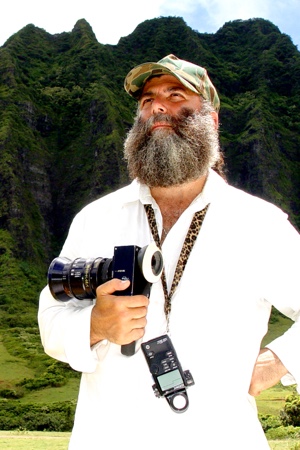 Kirill: Please tell us about yourself and what drew you into the industry.
Kirill: Please tell us about yourself and what drew you into the industry.
Crescenzo: My father was in the field of advertising, working as an art director, graphic designer, and illustrator… He was in very high demand at the time – a quintessential ‘Madison Avenue Mad Man’. One of his photographers at that time was Richard Avedon, and when I was a young boy, 4-9 years of age, I had the privilege and the opportunity to watch Richard work with my father, even though I was not aware of his fame at the time of course.
Both my parents were artists, (my mom was an interior designer, sculptress, and painter), and we had hundreds of art books all around the house. I too wanted to become an artist, a photographer, and it all started when I was watching my father work. I was conscious of this at that time, and knew I had wanted to be a photographer ever since I was 5 years old… Soon thereafter, my father brought home my first 2 cameras; a Brownie, and a Polaroid – all for me! They are now trophied in a glass case in my office.
Kirill: How much has your field changed since you joined it professionally?
Crescenzo: They say that it takes a lifetime to become a cinematographer – and it certainly does! Every day is a learning process, perpetually shifting. It might be a new view point of aesthetics, new stimulation, new technology, new equipment, or a new philosophy in the way I think about my work and how I should approach it at my current state of mind. It might be the barometer of our pace of our society, our culture, and how we story tell our lives at this time of life. It changes day to day to day. You never stop learning in the art of what we do – because art is life!
From the beginning to now, it’s still a growing process. In fact, the more you learn, the more you realize you have more to learn. That’s the paradox of it all. You filter all that information and knowledge inside your heart, mind and soul, and you try to collectively use that to fuel your sensibility to express your stories. When you become sharply in tune with this personal ever changing growth, you now realize, your learning starts all over again because it’s a different plateau of thinking – thus, a different aesthetic and different approach to your personal execution…
This day and age we have new technologies and new equipment. Sometimes you need to be a computer engineer to shoot something these days. It’s constant learning. To be honest, it’s not gotten any easier. That’s for sure. It just becomes more arduous and more challenging as we progress as a culture, as a society and in the field itself. There’s just so much information out there, so many choices, so many options, so many opinions, so many approaches, so many menus, and an infinite amount of stories to tell…
Kirill: Is it due to growing expectations from the production values, or perhaps the technology is getting more complicated?
Crescenzo: I think, mainly because of the so-called, “bar”… The intellectual bar, the creative bar, the bar of the audience wanting more – that’s what makes it more challenging and difficult with each passing year. The bar itself keeps rising and rising. There’s so much brilliant content out there right now. There are so many wonderful shows, and it becomes more challenging not only to surface yourself above the few that are around you to be nominated, but also to just watch the content itself.
You can only watch so much. There’s only so much time in the day, and one’s personal time in their day. That becomes challenging as to what shows you want to electively choose to watch, and why do you want to watch those shows. It is challenging for the networks, the studios and the executives. The bar keeps rising, not just at the creative level, but also at the physical content level.
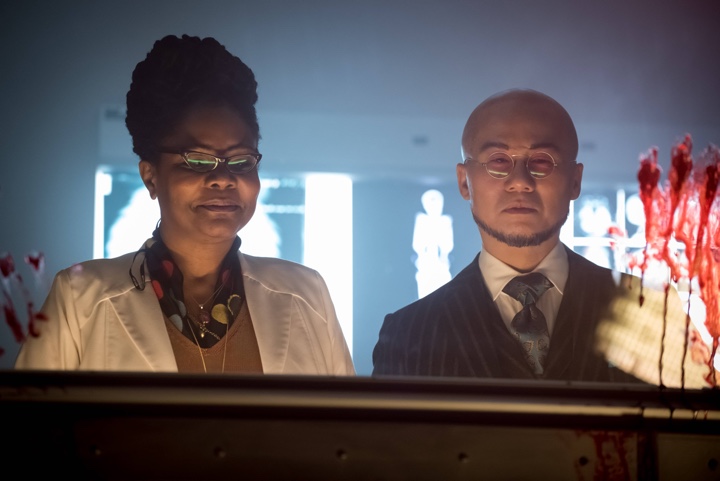
Courtesy of FOX’s “Gotham”.
Continue reading »
Continuing the ongoing series of interviews with creative artists working on various aspects of movie and TV productions, it is my pleasure to welcome David Crank. In recent years David worked as art director and production designer on productions such as “The Master”, “Inherent Vice”, “The New World”, “There Will Be Blood”, “John Adams”, “Water for Elephants”, “The Tree of Life”, “To the Wonder”, “Lincoln” and his most recent “Concussion”. In this interview he talks about the art and craft of production design and how it evolved over the last couple of decades. The second part of the interview is about David’s work on the remarkably crafted sets of “The Double” – a dark satirical comedy whose visuals grip you from the very first frame and don’t let go long after the movie has ended.
Kirill: Please tell us about yourself and your path so far.
David: I worked for about ten years designing sets and costumes in theater, and then switched over to film around 1990. Film was what I always wanted to do, but I didn’t have that opportunity in Richmond where I grew up. I enjoy both disciplines, but I like being able to concentrate on one project intensely and then go on to the next one, whereas in theater you needed to have two or three going on at the same time in order to make a living.
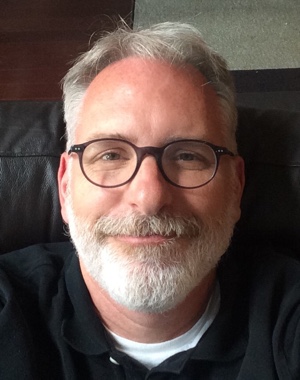 Kirill: If you consider storytelling in these two mediums, theater and film, are there any big differences, or is it sufficiently similar?
Kirill: If you consider storytelling in these two mediums, theater and film, are there any big differences, or is it sufficiently similar?
David: There are different techniques you use, but to me, the storytelling aspect of it is fairly similar. If it happens to be on stage, you can do it one way, and if it’s on film, you can do it in another way. But your ultimate goal is still telling an interesting story in an exciting fashion, and hopefully, engage people. In terms of design, there are small technical differences, but really, design is design. You still apply the same knowledge and skills to both mediums.
Kirill: To me it feels like you have the fixed space on stage, and you can’t take the viewers closer or farther away in the same way that a film camera can.
David: True, you still do the same things. In film you do close-ups and shift the focus with the camera, but in theatre, you can also control the focus on stage by directing the eyes of the audience through design and lighting. It’s a different scale and done in a different way, but, in effect, you’re still doing the same thing.
Kirill: Do you find that some stories lend themselves to be better told on stage vs film, or does it depend on the talent of the storytellers to take advantage of the stronger sides of the specific medium?
David: There probably are some that do lend themselves to being better told on stage. I think, however, it’s similar to the question of what is better – a book or a movie? In a sense, you should be telling the same story, but taking a different path to get there. The method of each will be slightly different, and while you get certain things from a book that you wouldn’t get from a film, you also get certain things from a film that you wouldn’t get from a book. For me, with film, the main thing that you have to always be aware of is using a cinematic language vs. a stage language. How can you tell something in a movie in a way that you can’t tell it in a play? That’s what you focus on. That’s how you tell your story.
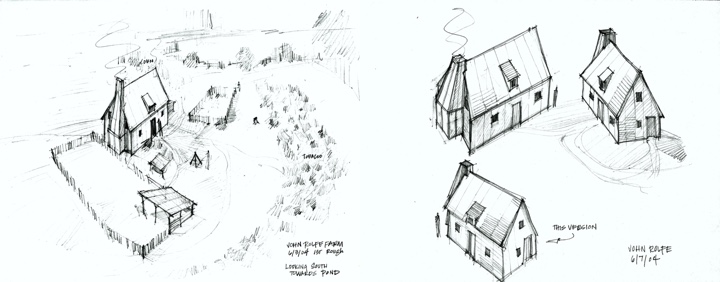
Layout sketches for John Rolfe farmhouse set on “The New World”. Courtesy of David Crank.
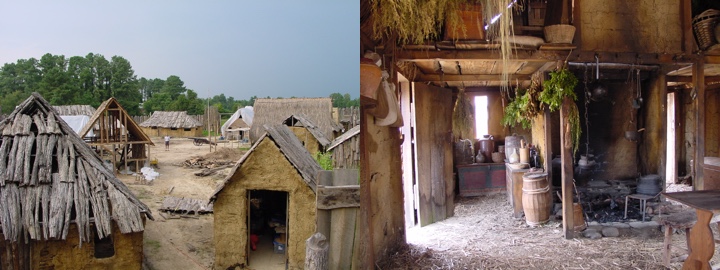
On the sets of “The New World”. Courtesy of David Crank.
Kirill: As you said, you started working on films in the early ’90s. That was before digital tools were as powerful and prevalent as they are today.
David: I started my career working mostly on historical dramas, because that’s what came to film in Virginia. Initially there was very little CGI used on projects that I was on, except to change the occasional background. The sets were built fairly complete.
Kirill: But even on historical dramas it gets pretty expensive to build very big sets.
David: Yes it can! When we did with “John Adams”, we had a massive number of sets to construct, many that were too large to build completely. We designed what we wanted them to be, and then sat down with VFX people and talked about what made sense to build in reality and what made sense to build digitally. You split up the work that way. It would be lovely to build it all, but nobody has the money for that [laughs]. You just attack each set separately and see what makes sense.
Sometimes you might build a bit more, because if you can do whole scenes without having to augment them with CGI, it might ultimately be cheaper for you. But, you might have a single shot that wants to pull back from there and show more building above, or more buildings beyond, and, that’s when it makes sense to add CGI. It’s different in every single case. There is no formula. You look at the specific problem, and you discuss how to best solve it.
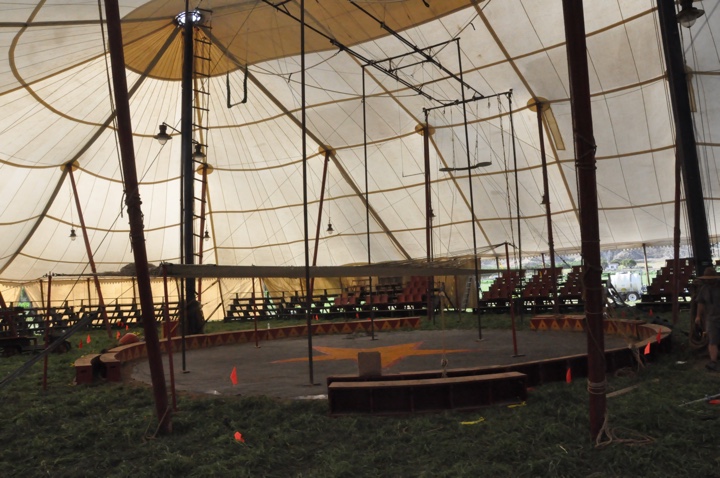
Big top circus tent set on “Water for Elephants”. Courtesy of David Crank.
Continue reading »
Continuing the ongoing series of interviews with creative artists working on various aspects of movie and TV productions, it is my pleasure to welcome Mikhail Krichman. In this interview we talk about the start of his career in the early ’90s that coincided with the big political changes in Russia, his ongoing collaboration with Andrey Zvyagintsev that included the Oscar-nominated “Leviathan”, how stories cross cultural borders and how stories can change dramatically when they are told in a different language (dubbing or voiceover), and the transition of the industry from film to digital in the last decade. The second half of the interview is about Mikhail’s work on the wonderfully crafted world of the recently released “Miss Julie”.

Mikhail Krichman on set. Photography by Anna Matveeva.
Kirill: Please tell us about yourself and how you got into the industry.
Mikhail: It happened almost accidentally. My parents come from the field of book typesetting. After finishing my army service I didn’t know what to do with myself, and I chose the easiest path. I wouldn’t say that it interested me that much, but I didn’t know anything else. I spent a lot of time in printing houses, and I liked the smell of the paint. Those were the things from my childhood that made me start my studies at what is now Moscow State University of Printing Arts.
It was around 1991. They had an arts department, but since I didn’t have any drawing skills, I didn’t have any thoughts about doing graphic design. I joined the department of technical studies, learning about the technology and the process of book printing. After third semester I moved to an extramural study program and started doing part time jobs. Those didn’t have any connection neither to what I do now nor to what I was continuing to study, and from what I remember from those activities, I might have even lost money doing them.
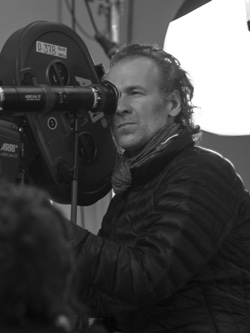 Mikhail Krichman on set.
Mikhail Krichman on set.
Photography by Anna Matveeva.And it so happened that I met a guy that was about to graduate from the cinematography department of the Gerasimov Institute of Cinematography. It was a birthday party, and I asked a question that probably a lot of people ask in a similar situation – would it be possible to visit a set and see how things work when they shoot a movie. We talked for a bit and then he disappeared, and I almost forgot about him. Then after a year he got in touch, saying that he had an opportunity for me to come and visit a set. That was how I saw a film set for the first time – as he was directing and shooting some kind of a commercial.
But that’s not how I started my path to becoming cinematographer. A bit later, again with the help of the same guy, I visited the editing room of a TV station. Back in the 1990s it was simply possible to go there and enter the buildings. The editing room was empty apart from one day a week. It was full with Betacams and mixing consoles, and I remember myself spending day after day reading the manuals, learning how different machines worked, trying to mix source materials that didn’t even belong to me. And after some time I became a junior editor.
Kirill: Without having some kind of a formal education in the field.
Mikhail: I noticed the people who knew what they were doing in the editing room, and started learning from them. It wasn’t overly difficult, and my boss saw that I wasn’t all that bad, so he kept me around. After a while I had a chance to sit through a number of study groups led by a teacher from the Gerasimov Institute of Cinematography. She was teaching courses on editing, and my boss invited her a few times a week to give lectures to me and my colleagues. She talked mostly about editing film, and it was a free-form dialogue. We didn’t have any strict plan, and keeping notes was optional even though we all kept detailed notes. She was a great teacher, and I learned a lot from her, things that stay with me until now.
I’ve spent around three-four years there, and then found the next step in my career. I met Leonid Kruglov who was doing a travel show for a national TV station. He invited me to Cuba to make a documentary with him, which was my first job in doing documentaries. It was only him and me, making a show about Santería and their religious beliefs.
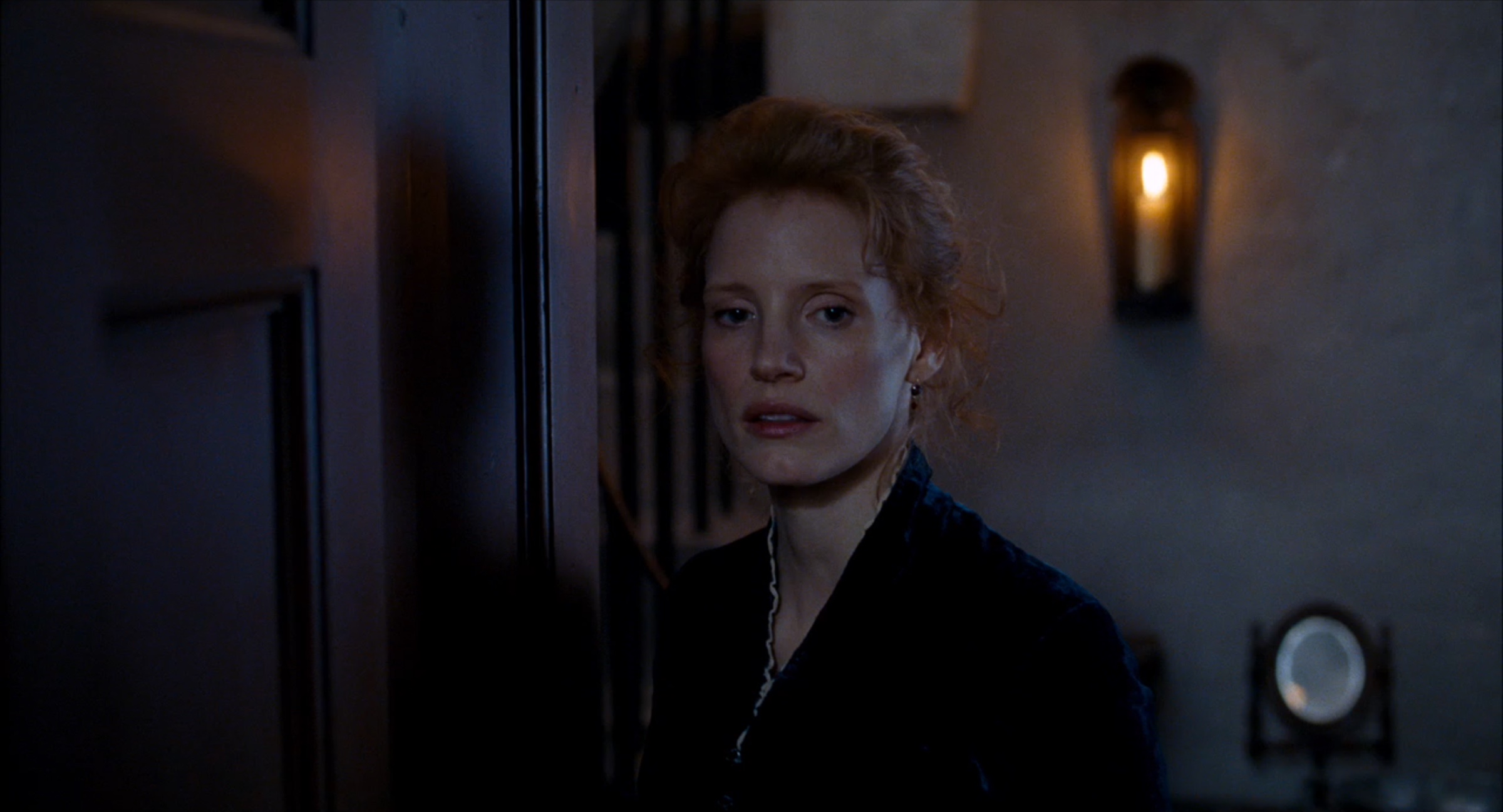
Right around that time we had first appearances of small hand-held digital cameras from Sony. Betacams were already around, of course, but they were bulky and expensive, confining them to studio environments. The small digital camera that we had cost around $3,000 and we also got a wide lens, starting to experiment with this new hardware and what it allowed you to do in the field. It was amazing at the time.
I also started doing music clips, as directors liked that I was both shooting and editing the material. And I kept on doing that travel show, going with a slightly bigger crew of five and two cameras. We did Papua New Guinea, Brazil, Colombia and Peru among the rest. That was already 1999.
And then in 2000 I met Andrey Zvyagintsev that worked at REN TV at the time. He got offered to do “The Black Room” show, choosing a few short stories to shoot. He was looking for cinematographers to shoot individual episodes, and one of my director friends put us in touch.
Kirill: And you continued working with him afterwards.
Mikhail: Yes. We did those three short stories, each one 25 minutes long and not related to the others. The show was received well, and I was contacted by a film studio to do my first full feature, “Binge Theory”. Then I did “Sky. Plane. Girl” in 2002.
Kirill: I remember the years after the collapse of Soviet Union, where a lot of industries underwent very big changes, as what was controlled by the state and the party was now transitioning into private hands. What was the state of the film industry in Russia around 2000?
Mikhail: The industry lost a lot of talented people, key people across all departments, including second unit directors, camera operators and script writers. People lost their jobs during that period, going to other fields that didn’t even have much connection to arts. Some went abroad and some just disappeared.
I wasn’t a big fan of Russian cinema at the time. I remember seeing differences in the artistic and visual quality of American, British and French films. I was also younger, and American movies were much closer to my taste as well. I can’t remember a single local film from the ’90s that had left a powerful impression on me. There were a few indie films that failed to deliver on their promise, and a lot of them went nowhere. Also, due to lack of budget, most of them were not done that well compared to european or American productions.
I think that aesthetics are an important part of making a film. When the form is untidy and messy, the content is sometimes lost. And that was struggling to pull their weight against the smooth form of the American films. It feels that only now I am starting to discover Russian cinema. Andrei Tarkovsky was a formidable figure. I might not have been able to appreciate his content at the time, but the form was powerful.

Continue reading »
Why are we seeing more screen graphics in TV shows these days? And why are those graphics almost always blue? Should we expect realism in how technology and user interfaces are portrayed in film and TV? Augmented and virtual reality – what can they be good for in our everyday lives? Is the technology around us evolving too fast and leaving too many people behind?
It gives me great pleasure to welcome Corey Bramall (aka Decca Digital) back to the ongoing series of interviews with designers and artists that bring user interfaces and graphics to film and TV screens. In our first interview we talked about his work on “Thor”, “Captain America: The Winter Soldier” and “Transformers”. Since then Corey has been busy at work on “Wayward Pines”, “Extant”, “The 5th Wave”, “Ant-Man” and, most recently, “Teenage Mutant Ninja Turtles 2” and “Captain America: Civil War”. As we talk about the topics mentioned in the opening paragraph and his recent work, we also discuss “Black Mirror”, “Ex Machina” and “Her”, and consider whether those fall under the realm of fantasy user interfaces.
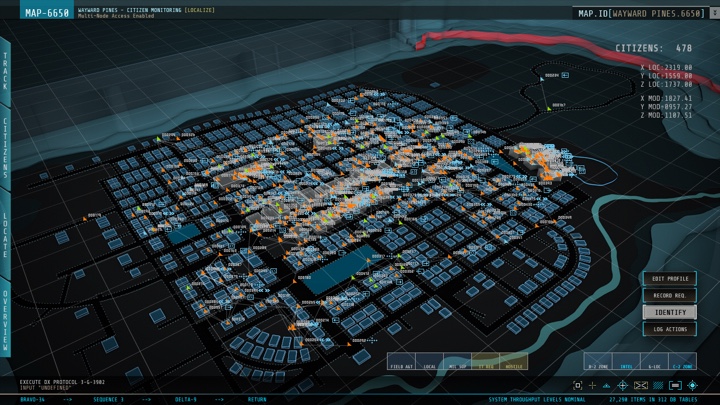
Screen graphics for Wayward Pines, courtesy of Corey Bramall.
Kirill: Let’s start by talking about the work you did for “Wayward Pines”.
Corey: We did the first season on that show. It was an interesting project, something that Fox has called “New Mystery Series”. It was only ten episodes, and it was nice. Each episode had a bigger budget, which adds almost like a movie quality to the show, and I thought it looked really good.
We did most of the bunker graphics which occurred later in the show. They didn’t reveal it until near the end of the first season. It was kind of an odd project where we did our work near the end. We were allowed to do almost whatever we wanted on it, which was nice.
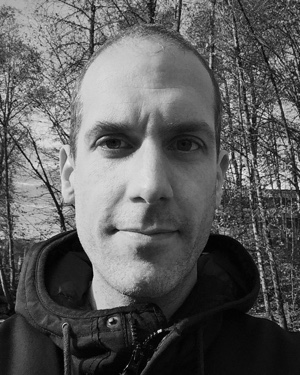 Kirill: Without revealing too many details, what I found interesting about the show was that while the story is set in the future, the technology comes from our present days.
Kirill: Without revealing too many details, what I found interesting about the show was that while the story is set in the future, the technology comes from our present days.
Corey: Without too many spoilers, they’re taking people from the present and cryogenically preserve them, but the computer technology can’t evolve. There are only so many people that have made it, so they wouldn’t have too many new pieces of technology or graphic design. It looked pretty real-world.
Kirill: How’s the pace of work on television? Do you work on the entire season, or is it one episode at a time?
Corey: It used to be one episode at a time, but nowadays they’re shooting two at the same time. If there’s a set with computers in it on both episodes, they’ll schedule the shots back to back so that they don’t have to move the crew. It gets confusing sometimes [laughs]. You’re making stuff for an episode, and halfway through it you’re making something for the next one.
It’s also usually a short shoot, six to eight days. It used to be a lot longer, maybe ten days for an episode five years ago.
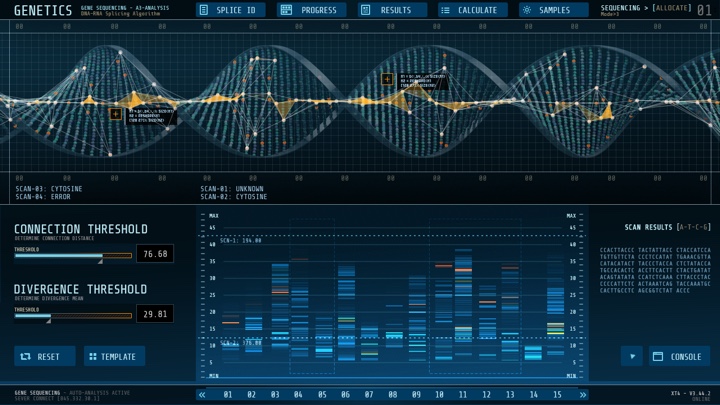
Screen graphics for Wayward Pines, courtesy of Corey Bramall.
Kirill: Do you do on-set playback sequences, or post-production?
Corey: For television it’s almost always on-set playback. I don’t go to set; I’m lucky to just stay in my office and design, while other people go to set.
I’ll get a script, and the breakdown of the scenes that we need for it from the show’s coordinator. I go through the list of things that I need to create, I do that and I give that back to them. Then another person go to set and they have to set up the computer, to make sure that everything functions technically. I don’t have to deal with that. It’s kind of nice [laughs].
Kirill: You mentioned that this show has an almost cinematic quality to it, and I guess that goes for a lot of TV drama these days, especially for higher-end productions that do “only” 10-12 episodes per season. Would you say that it requires the same attention to detail and sophistication of the work you’re doing if you compare it to feature films?
Corey: It is now. And that’s especially true for medical sets on television. They’ll have a medical tech there checking to see that the stuff you create is accurate. The only used to do that on film, because they have bigger budgets, but you see a lot of that on TV shows now. You have to be a lot more careful [laughs] about what you’re making. You can’t just wing it. You have to do better research. So that’s getting a lot more similar to film.
And then there’s also the quality. The gap between television and film is so small now.
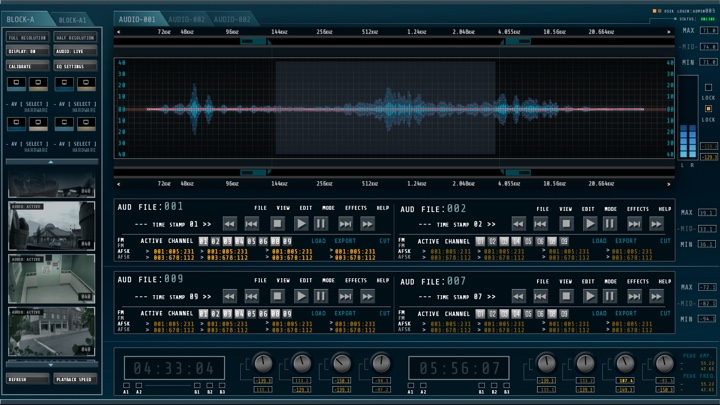
Screen graphics for Wayward Pines, courtesy of Corey Bramall.
Kirill: It’s just a slightly different form of storytelling, where film studios are creating franchise universes that evolve throughout multiple films, and TV shows are exploring very tightly scripted arcs.
Corey: I think it’s also a symptom of hardware being so cheap. If a production needs a couple of 70″ monitors, for example, they can just go and buy them. That’s available and not expensive, whereas before it was a big deal to add such large monitors. Not everybody could afford that, and there just weren’t that many.
Often now you build graphics for a set on a TV show, and they keep on adding monitors and need content for those. It’s similar to the world of feature film – they’ll do what is right visually, as opposed what is right for the budget. Five monitors is not that big of a deal anymore, but there’s that much more content to make. On a film it’s pretty typical to have 20-30 monitors on a set, but that used to never occur on TV sets. You see it often now, which is great.
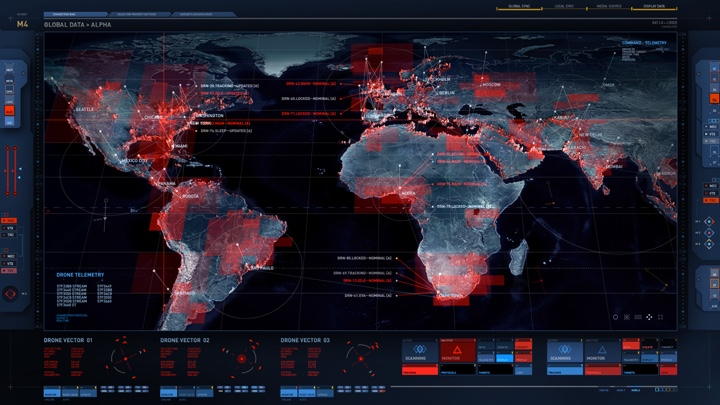
Screen graphics for The 5th Wave, courtesy of Corey Bramall.
Continue reading »
![]() Kirill: Please tell us about yourself and what drew you into the industry.
Kirill: Please tell us about yourself and what drew you into the industry.![]()